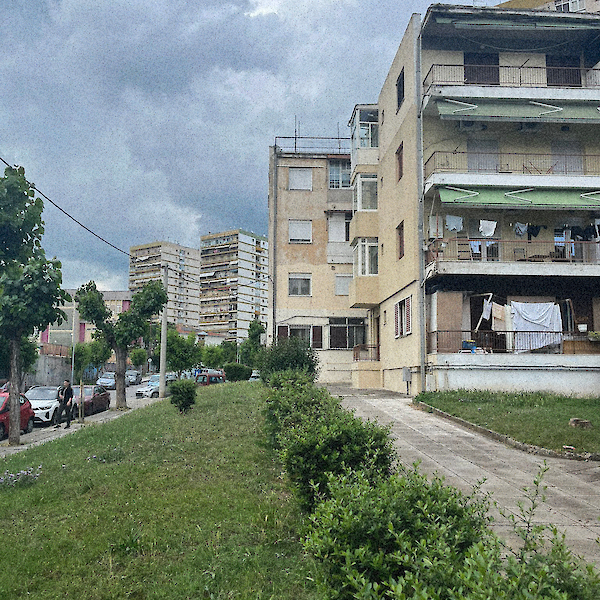History of Thessaloniki
Thessaloniki's early construction followed the Hippodamian city planning system, resulting in the establishment of rectangular city blocks that extended to Egnatia Boulevard12. Under Tanzimat reforms in the mid-19th century, the city's districts were divided along ethnic and religious lines, with Muslims residing in the Upper City, Orthodox Christians in various areas along the Egnatia Road, and Jews near the sea under Egnatia12. In the latter half of the 19th century, population growth influenced the urban structure of cities and contributed to their economic development3. After that, World War I and the subsequent population exchange between Greece and Turkey had a profound impact on Thessaloniki's urban structure. The influx of refugees and the challenges they pose in terms of housing and urban planning are the main issues of this period. The Great Fire of 1917 was a significant event that destroyed a great part of Thessaloniki's historical center. Post-fire reconstruction plans, including the New Plan of Thessaloniki, proposed by the urban planner Ernest Herbard, emphasized the creation of orderly city blocks and the introduction of new public buildings345. The 20th century brought further transformations to Thessaloniki's urban structure. During this time, the influence of modernization efforts is explored, including the introduction of transportation infrastructure, public spaces, and cultural landmarks. The key projects are the construction of the White Tower, development of the waterfront promenade, and creation of Aristotle Square6.
The district Vardaris of Thessaloniki
Economy in Vardaris
Due to its central location and the Vardaris-Xanoriki train station, the district of Vardaris is closely linked to the general processes of the city and must therefore always be seen in the context of the city of Thessaloniki. For this reason, the following analysis of the district will also contain general information about Thessaloniki.
The main source of income in Thessaloniki is tourism. More than two million people arrive each year to visit and vitalize the city. Therefore, it is the biggest source of employment. Another important sector in economy is the cargo port. The second largest port in Greece serves as an export and transit hub to the Black Sea and the Balkans. The city is also an important industrial and manufacturing location. Some of the old infrastructure is still there and is in new use or waiting for it (such as tobacco factories or the old Allatini Mills). Today the main sectors are oil, steel, petrochemicals, textiles, machinery, flour, and cement78.
Despite the economic importance of Thessaloniki for Greece, its unemployment rate is still relatively high, at around thirty Percent. Especially, young people are thereby in a volatile situation, even though the employment rate increased strongly over the years, in comparison to the situation after the financial depression in 20108.
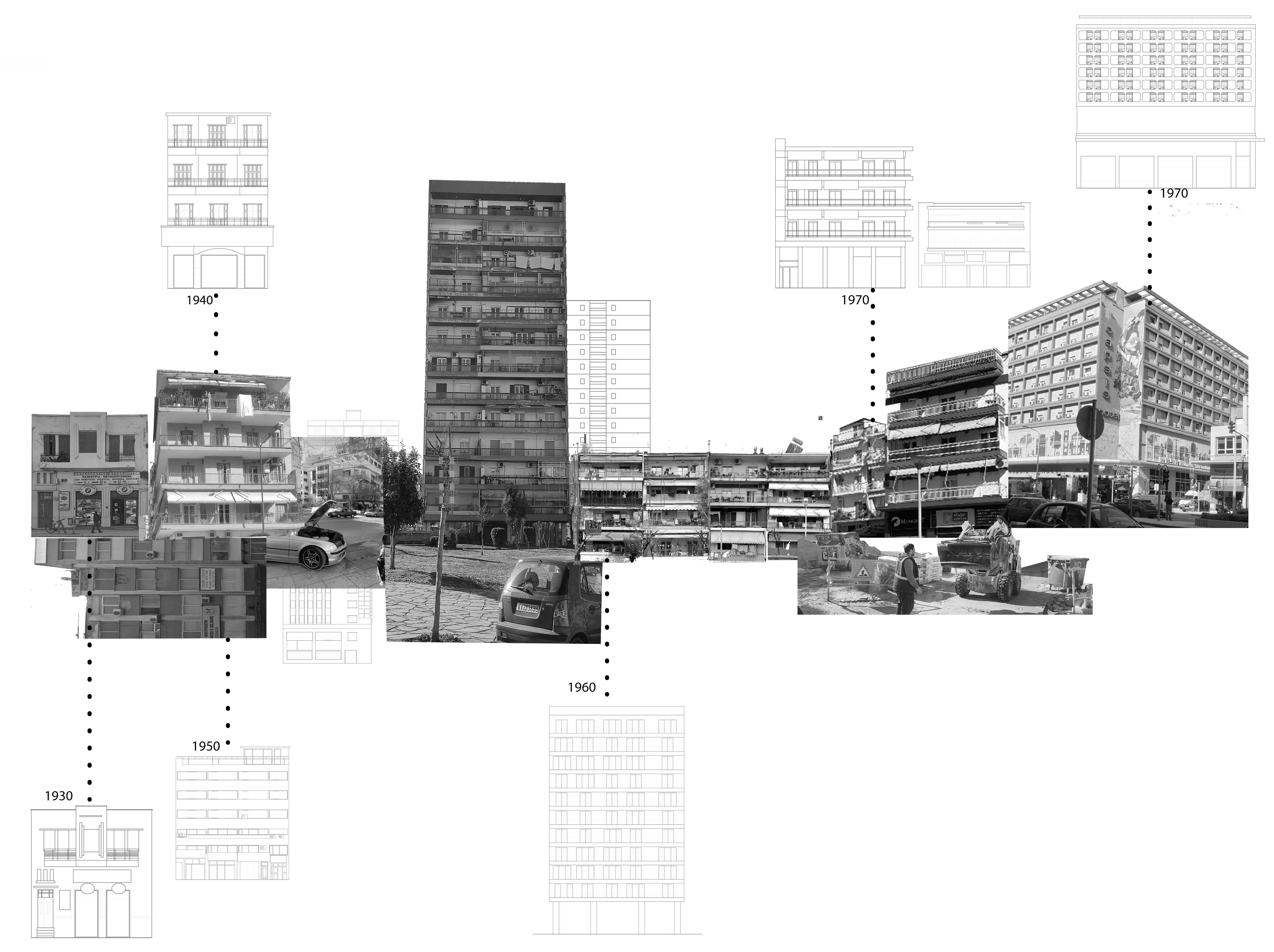
Housing in Vardaris
The Cityscape in Thessaloniki is, for the most part, characterized by the building style Polykatoikia. First developed in the 1920s, the Polykatoikia was implemented as a solution for the housing shortage. Due to its prefabricated elements, a fixed core of staircase, an elevator shaft, and a concrete skeleton, it is a fast-constructed building type which reshaped most of the Greek cities. The maximum eaves height was thereby fixed at 120 Percent of the street width9. Additionally, buildings are usually oriented outwards with their balconies and verandas to provide more open space. Furthermore, the ground floor is designated to businesses or shops to enable multi-functionality inside the buildings and also give space for pedestrians to walk.
In contrast to most Thessaloniki, the building types in Vardaris and Xyrokrini have more varieties. Most of the area was designed as government-subsidized social housing in the form of four-story buildings without shops at the ground level. This is something special for Thessaloniki, as there are only two larger planned areas in the city for social housing. Consequently, the social housing area appears to be more organized than the rest of the city. In this case, the green spaces surrounding the apartment buildings were also designed, whereas many other green spaces in the housing districts were not planned in advance in Thessaloniki. However, due to the low-income area, the houses are mostly in a relatively bad shape and are in dire need of renovation.
One specialty in the area are the two twelve-storey towers at the junction of Geor. Ivanof Road and Nik. Kapatou Road, they can be seen from far away and serve as a landmark for the district. They were developed as social housing, but the ground floor is used for public institutions and the apartments are built on top of it. However, already today the pressure on local residents is increasing, as rents are going up and increasing numbers of living rooms are being converted into Airbnb’s for tourists, which creates new tensions, as the locals are forced to move out due to gentrification.
Social Structure and Participation in Vardaris
City development holds the responsibility for a healthy and positive future for our children, and thus for the entire society as well. In Thessaloniki, forty-one Percent of the population is aged between zero and thirty-four years11. In the Vardaris district in Thessaloniki, there are schools, kindergartens, social housing, sports facilities, associations, and playgrounds/parks that contribute to its role as a hub for community activities. However, the mini-market shows compact dimensions of housing in the area. The height of the buildings makes the surroundings look crowded and the visitor feels cramped. When looking at the map created, many facilities, such as schools and kindergartens, can be identified, but no children were seen in the afternoons after school hours in the area. Thessaloniki is also a very important university city and has the highest number of students. Therefore, it has a high proportion of young people. But as stated above, they often lack financial resources.
Another example of the social profile of the neighborhood is the existence of the self-help association indicated in red on the map. Self-help is a social program founded in 2001 in Thessaloniki, financed by the Greek Ministry of Health and implemented by the Department of Psychology of Aristotle University of Thessaloniki operating with the cooperation of OKANA (Organization Against Drugs). It attempts to support and promote self-help/mutual aid philosophy in addressing addiction and other psychosocial problems, as well as health problems, by reintegrating individuals into society through art projects and learning professions10.
Transport and Infrastructures in Vardaris
The train station in the area presents a distinct sense of abandonment and isolation. It lacks vibrancy and fails to serve as a hub for community interaction and mobility. The neglected state contributes to a feeling of disconnection from the surrounding neighborhood. The presence of a train station creates a physical division that results in two distinct districts. This division hinders social cohesion and inhibits the flow of people and activities between the areas.
Apart from the negative effects in the aftermath, the railway station offers an opportunity for the metropolitan region of Thessaloniki to develop greater significance. Xanoriki Station is an important hub in Thessaloniki's transportation network, connecting local, regional, and international rail traffic. This connectivity facilitates efficient passenger and freight transportation and improves the accessibility of the city. The integration of the station with other means of public transportation such as buses, streetcars and possibly future metro lines, creates a seamless transport system. This intermodality reduces the dependence on private transport, relieves traffic congestion, and lowers carbon emissions.
In addition, the station improves accessibility for diverse populations, including low-income residents, students, and the elderly, by providing affordable and efficient transportation. In addition, a well-connected railroad station increases the city's attractiveness as a tourist destination and makes it easier for visitors to explore Thessaloniki and its cultural attractions.

The presence of numerous parking spaces and the prioritisation of cars over other modes of transportation dominate Thessaloniki. This excessive allocation of space for parking inhibits the potential for vibrant and pedestrian-friendly urban spaces. Encouraging walking, cycling, and public transit should take precedence, to reduce the dependency on cars and improve the overall quality of the built environment. The metro, which is currently under construction, plays a major role in this.
Public and Green Spaces in Vardaris
Thessaloniki faces the challenge of limited public and green spaces amid its dense urban fabric. In comparison to European standards, Thessaloniki has one of the lowest ratios of green space per resident, with only two point six square meter per inhabitant12. This indicates that previous policies and projects aimed at addressing this issue have encountered significant obstacles and have yet to yield substantial results13. The scarcity of green spaces is further exacerbated by the city's high residential densities14.
Public and green spaces in Thessaloniki vary in terms of their visibility within the city. Some spaces such as Aristotle Square and the waterfront promenade are highly visible and serve as iconic landmarks that attract both residents and visitors. These spaces contribute to a city's identity and serve as meeting points for social activities and events. On the other hand, there are hidden or underutilized spaces that lack visibility and fail to draw people's attention. Enhancing the quality of these spaces is crucial to ensure their utilization and integration into the urban fabric.
Thessaloniki boasts of a diverse range of public and green spaces, each with its own unique characteristics. Additionally, Thessaloniki is known for its historical landmarks, such as the White Tower and Rotunda, which serve as significant public spaces that showcase the city's rich heritage.
The designated areas serve as communal gathering spaces and recreational hubs for residents. Squares typically feature open plazas, often surrounded by buildings, while parks encompass larger areas with greenery, trees, and amenities, such as benches, playgrounds, and walking paths.
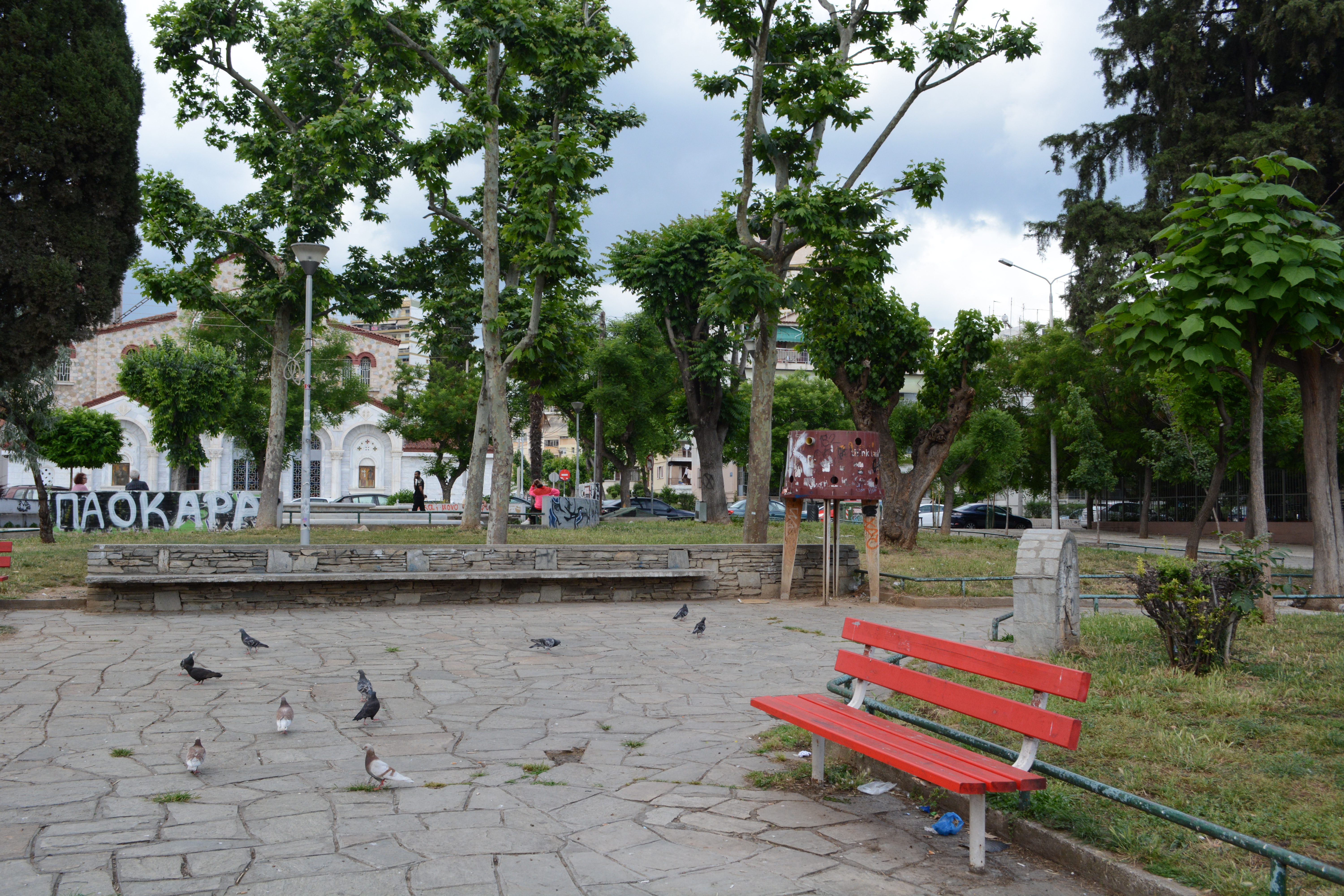
Along the streets, pathways, and front gardens of the social housing district, Thessaloniki incorporates greenery, such as grass areas, sometimes flowerbeds, trees, and shrubs, to enhance visual appeal or provide shade. These green corridors have the potential to contribute to the aesthetics of the cityscape, while offering a pleasant pedestrian experience.
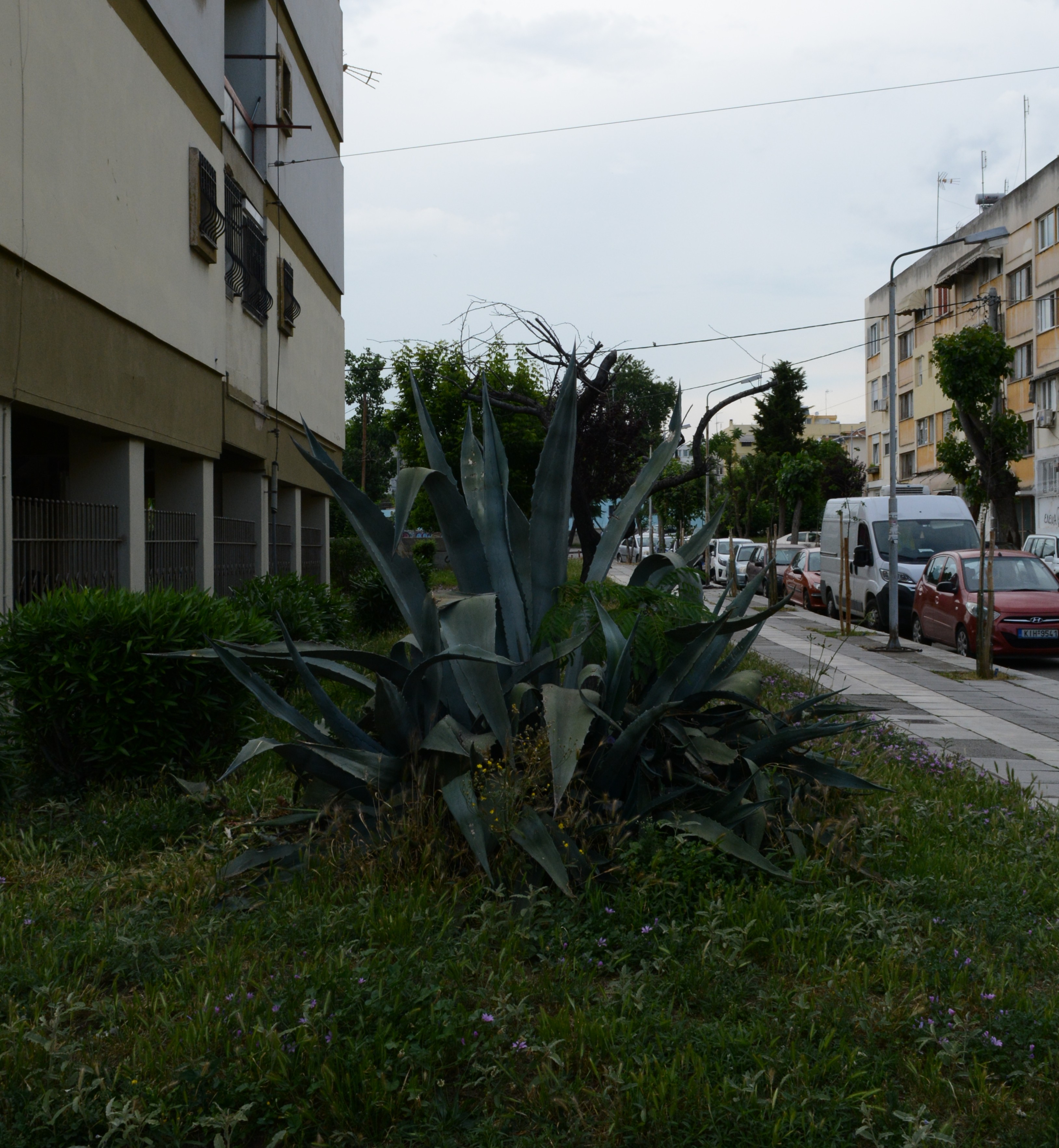
Thessaloniki embraces the concept of tree-lined streets, where trees are planted along the sidewalks or medians. These linear green spaces not only contribute to the city's aesthetics but also provide shade; they can reduce heat island effects and improve air quality.
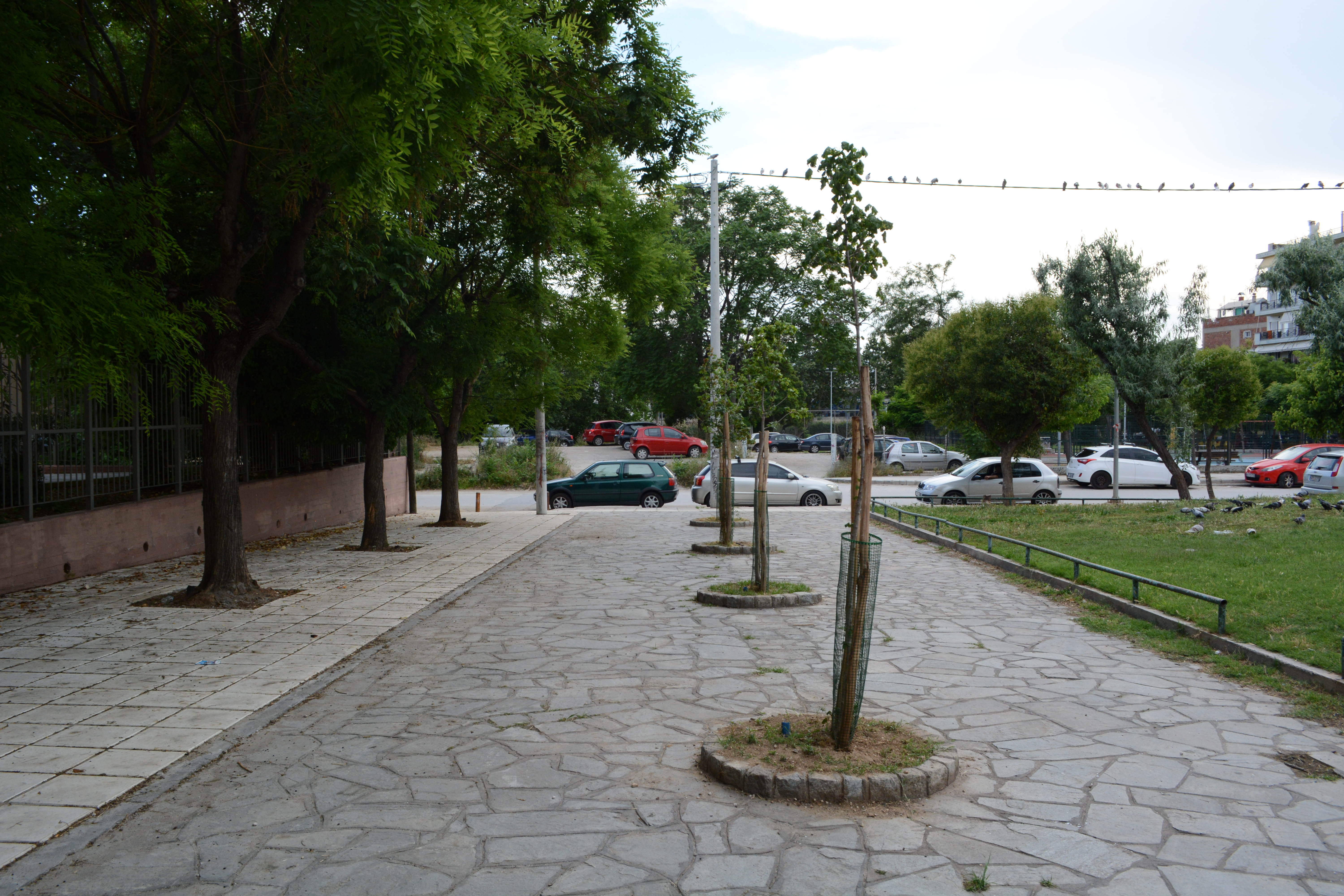
Within educational institutions, school courtyards serve as semi-private green spaces for students. These areas offer opportunities for outdoor activities, relaxation, and social interactions, fostering a healthier and more engaging learning environment. In Thessaloniki, these places are often fenced by tall walls, not allowing for any social interaction or opening of those places to the public.
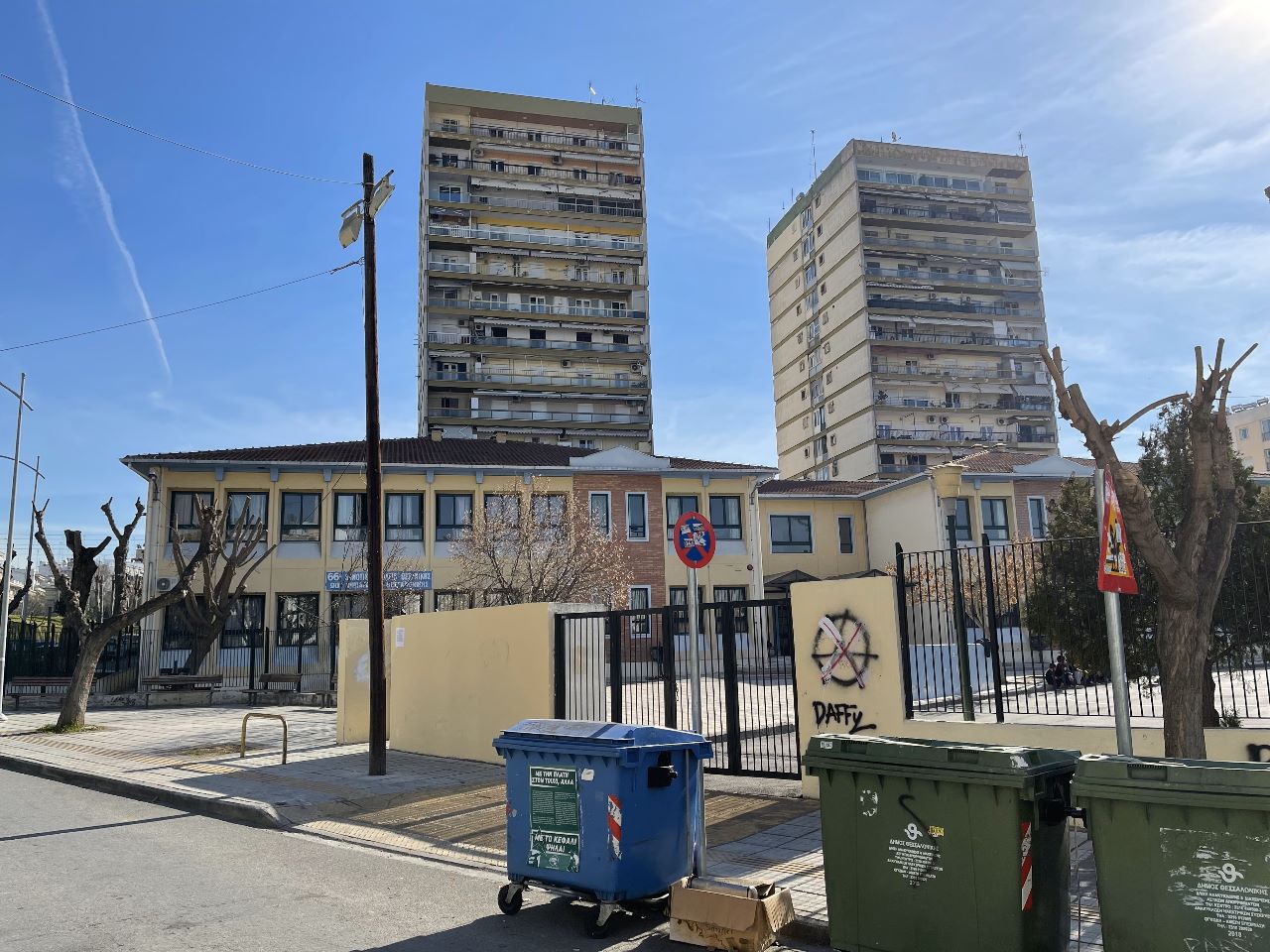
Sports areas can include playgrounds, sports fields, and courts, catering to various sports such as football, basketball, and tennis. Most of these spaces are enclosed by fences or walls, often featuring only a single entrance, creating separation from the surrounding environment.
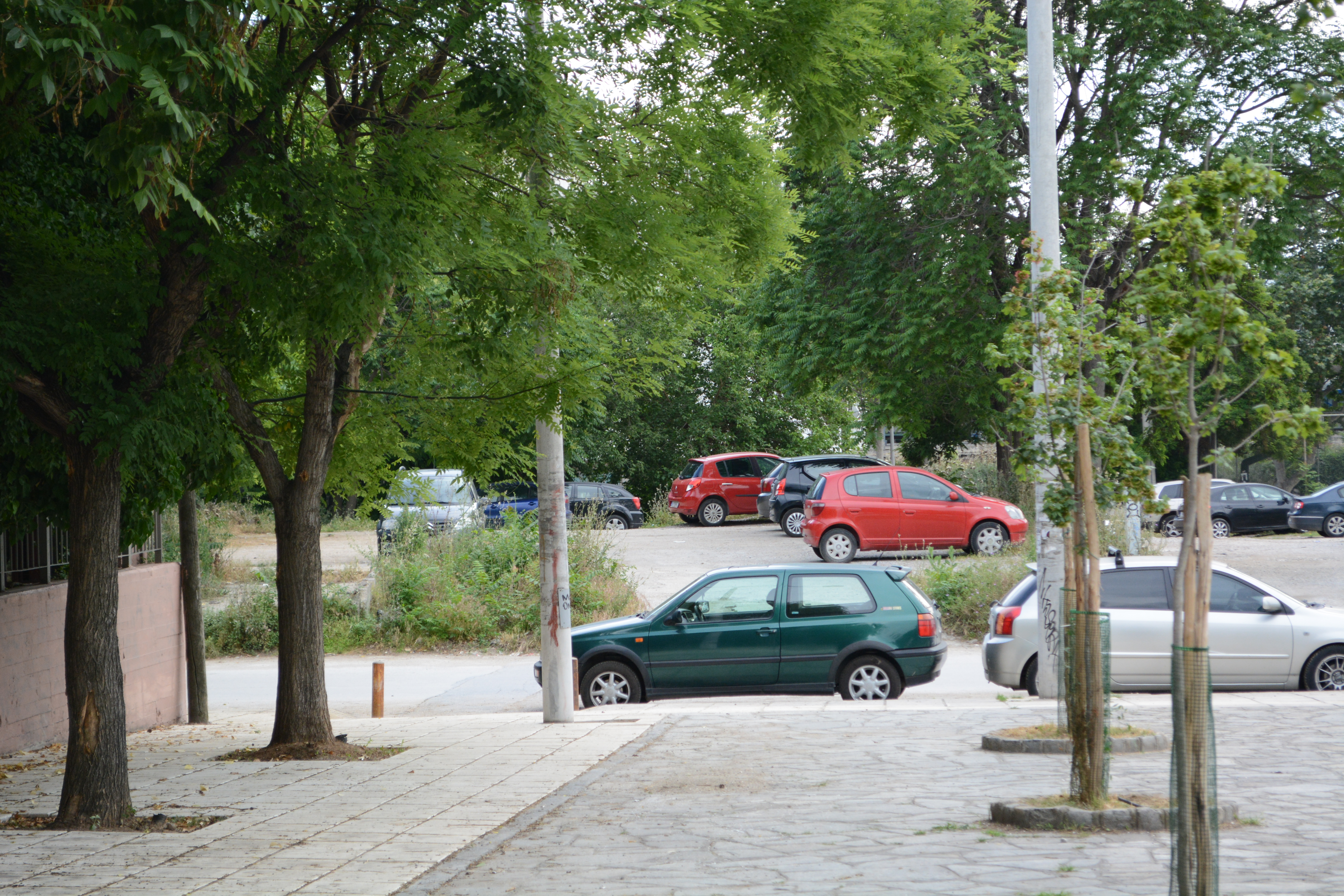
In addition to intentionally designed green spaces, Thessaloniki encompassesopen, non-designed spaces. These areas may arise naturally or as a result of urban voids or vacant lots. While not specifically planned or landscaped, they often appear as places for wilderness or are used informally as car parks.
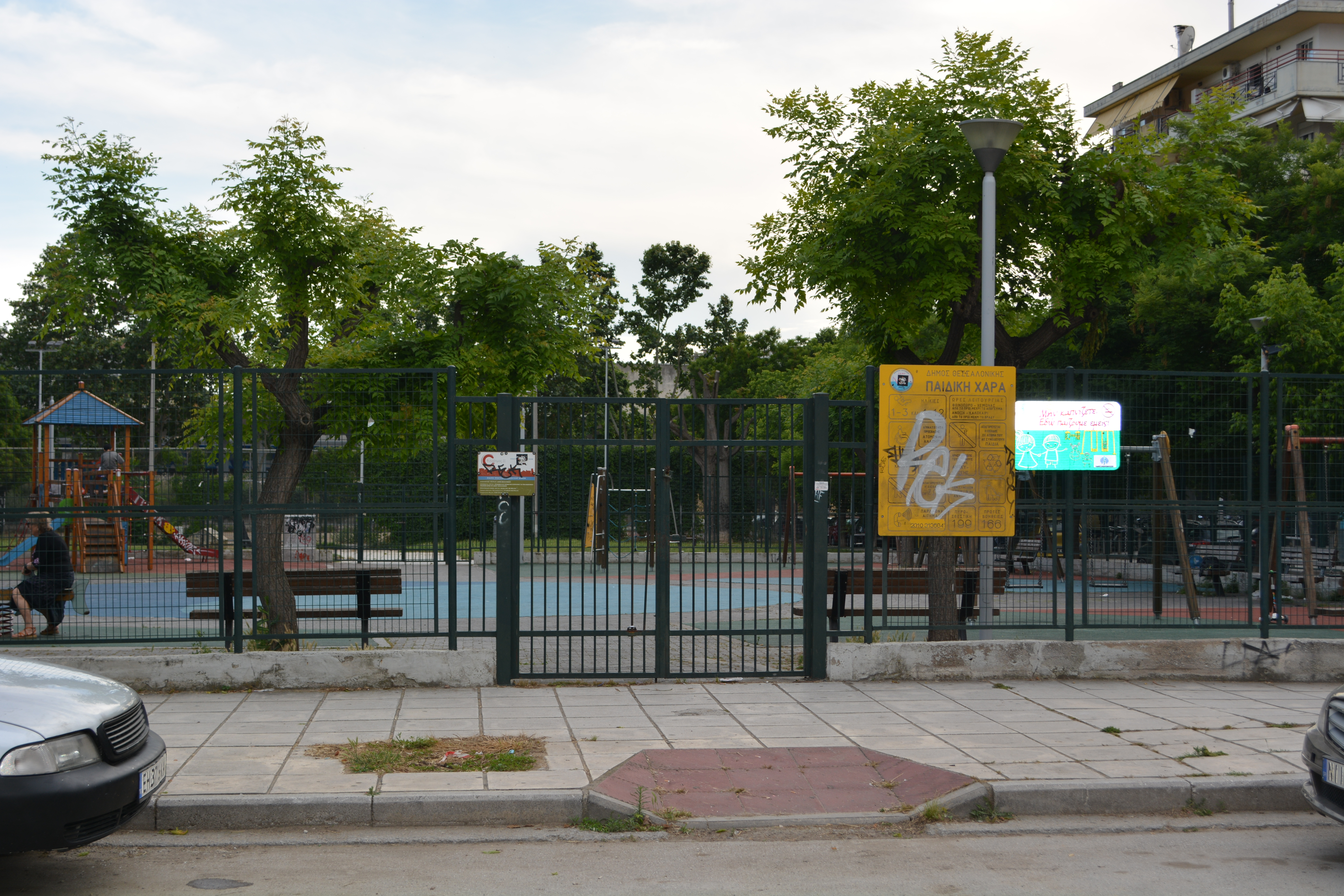
Conclusion and Outlook
The presented analysis is a result of the Thessaloniki Summer School 2023 on „The future of central urban areas of Thessaloniki“ that took place from in May 2023, in Thessaloniki (https://future-centres.eu). The aim of the Summer School was to get an integrated perspective on a specific central neighbourhood of the city to formulate solutions addressing the current challenges. This requires an understanding of the historical development and an analysis of the current situation. Based on this evidence, it is possible to develop steering methods, governance proposals, and design solutions to contribute to Thessaloniki's attractive, resilient, and sustainable future.
By focusing on the central areas of Thessaloniki, in particular the Vardaris-Xirokrini area next to the city’s Central Train Station, the analysis provided the opportunity to reflect on a wide variety of urban issues through urban planning and design approaches. Among others, these are issues of historical and spatial path dependencies, liveability and equity, economic vibrancy and social cohesion, enhancing public spaces, expanding green spaces, making cities more walkable and less car-dependent, and engaging civil society through inclusive participation. The discussion brought to the fore some questions of critical significance: How can urban planning and design respond to the ongoing social, economic, and environmental transformations in times of various crises like pandemics or climate risks and hazards? How can we move beyond existing restrictions towards sustainable patterns of urban development, urban mobility, and urban co-existence and well-being, paying attention to diversified human needs?
If you are interested in hearing more about sustainability in the inner-city development of Thessaloniki, you can listen to an audio guide created by the students, which is freely accessible through the izi.TRAVEL-page/app and the web. The audio guide, accompanied by the mascot “Sustainable Socrates,” is available for free here: https://future-centres.eu/en/year2023/student-projects/
Autor*innen
Quellen
- „A Mediterranean City in Transition: Thessaloniki between the Two World Wars“. In: Architecture and Civil Engineering Vol. 1 Nr. 4, 493-507, 1997
- Saloniki 1912-1922. Krieg, Demographie und Stadtentwicklung, 132, Graz 2018
- Thessaloniki: Strategic Spatial Planning after the Great Fire of 1917, 1917
- „Evolution of water supply infrastructures of Thessaloniki city, Hellas, through centuries“. In: European Water 58, 465-472, 2017
- From Ashes to Rebirth: The Great Fire of Thessaloniki. The Great Fire of 1917 changed Thessaloniki forever; calamity became opportunity, as a bold new city plan was implemented. https://www.greece-is.com/from-ashes-to-rebirth-the-great-fire-of-thessaloniki/, 26.06.2023
- Airport Thessalonik. https://www.hcaa-eleng.gr/thes.htm, 27.6.2023
- Census results of population and housing 2021. https://elstat-outsourcers.statistics.gr/census_results_2022_en.pdf, 17.03.2023
- The European´s Commissions Intelligent Cities Challenge. Thessaloniki, Greece. https://www.intelligentcitieschallenge.eu/cities/thessaloniki, 03.07.2023
- Polykatoikia. Design studio, Winter 2014/2015. https://lia-berlin.de/Polykatoika, 01.07.2023
- „Self-Help / Mutual Aid. https://www.selfhelp.gr/en/self-help-mutual-aid/, 31.05.2023
- Population Census 2011. http://panoramaps.statistics.gr/, 31.05.2023
- „Valuing the benefits of an urban park project: A contingent valuation study in Thessaloniki, Greece“. In: Land Use Policy Vol. 55, S.130-141, 2016
- „Making Thessaloniki resilient? The enclosing process of the urban green commons“. In: Urban Planning 8(1), 346-360, 2023
- Resilient Thessaloniki. A Strategy for 2030. https://resilientcitiesnetwork.org/downloadable_resources/Network/Thessaloniki-Resilience-Strategy-English.pdf, 31.05.2023

